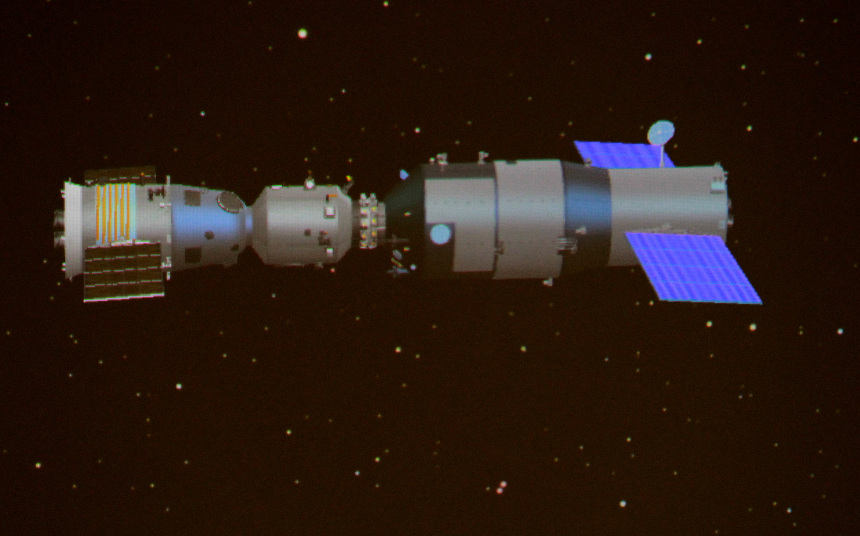June launch set as tryout for space station
 0 Comment(s)
0 Comment(s) Print
Print E-mail Shanghai Daily, February 16, 2012
E-mail Shanghai Daily, February 16, 2012
China will launch the Shenzhou-9 spacecraft in June to dock with the orbiting Tiangong-1, a module of the country's planned space station, then launch the Shenzhou-10 next year to send astronauts into the module, the China Aerospace and Technology Corporation said yesterday.
 |
|
A simulated computer image of the spacecraft after Shenzhou 8 successfully docks with Tiangong 1. [Xinhua] |
Two or three astronauts will be sent into the 8.5-ton Tiangong-1, or "Heavenly Palace," during the Shenzhou-10 mission next year to make it a trial for China's future space station, said Zhu Yilin, a researcher on the project from the Chinese Space Technology Institute.
The astronauts will perform several manual dockings of the Shenzhou-10 and Tiangong-1, as practice for backup measures when the automatic docking process fails, Zhu said.
The astronauts' major tasks will include experiments and maintaining the lab, he said.
Tiangong-1 was blasted into space on September 29. Wang Zhaoyao, vice director of the China Manned Space Engineering Office, said he and his colleagues were confident that the module will function until the end of its design life of two years.
During the Shenzhou-9 mission in June, a channel between the unmanned Shenzhou-9 and the Tiangong-1 will open for the first time to link the air between the two spacecraft, a key step to prepare for the following manned mission, said Zhu.
"The temperature, humidity and pressure will be monitored after the air is ventilated between the two spacecraft to ensure the safety of the astronauts into the Tiangong-1 on the following mission," Zhu said.
Some small animals and plant seeds will be taken aboard the Shenzhou-9 for passive experiments on the conditions of zero gravity and radiation, he said.
China launched its unmanned spacecraft Shenzhou-8 on November 1 and completed a second space docking test with the Tiangong-1 two weeks later, but the two spacecraft remained separated as the two doors on the channel between them were closed.
After the Tiangong-1, China will launch Tiangong-2 and Tiangong-3, probably both manned, to complete the laboratory, said Wu Ping, spokeswoman for China's manned space program.
China will set off another space laboratory in 2016 and launch its first space station of 60 tons and with three capsules around 2020, Wu said.
China also plans to build a space infrastructure composed of Earth-observation satellites, communications satellites, and navigation and positioning satellites.





